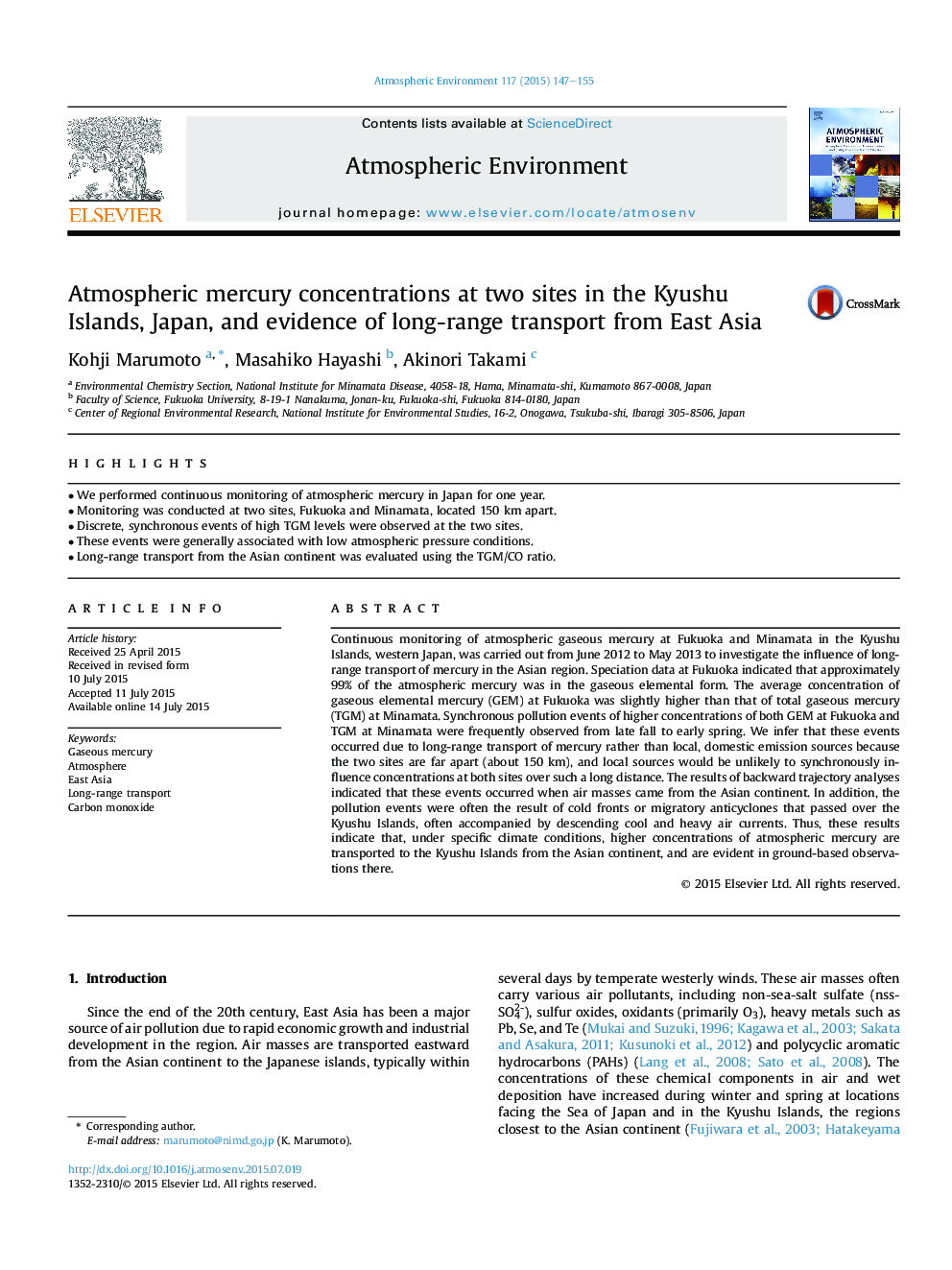| Article ID | Journal | Published Year | Pages | File Type |
|---|---|---|---|---|
| 6337732 | Atmospheric Environment | 2015 | 9 Pages |
Abstract
Continuous monitoring of atmospheric gaseous mercury at Fukuoka and Minamata in the Kyushu Islands, western Japan, was carried out from June 2012 to May 2013 to investigate the influence of long-range transport of mercury in the Asian region. Speciation data at Fukuoka indicated that approximately 99% of the atmospheric mercury was in the gaseous elemental form. The average concentration of gaseous elemental mercury (GEM) at Fukuoka was slightly higher than that of total gaseous mercury (TGM) at Minamata. Synchronous pollution events of higher concentrations of both GEM at Fukuoka and TGM at Minamata were frequently observed from late fall to early spring. We infer that these events occurred due to long-range transport of mercury rather than local, domestic emission sources because the two sites are far apart (about 150Â km), and local sources would be unlikely to synchronously influence concentrations at both sites over such a long distance. The results of backward trajectory analyses indicated that these events occurred when air masses came from the Asian continent. In addition, the pollution events were often the result of cold fronts or migratory anticyclones that passed over the Kyushu Islands, often accompanied by descending cool and heavy air currents. Thus, these results indicate that, under specific climate conditions, higher concentrations of atmospheric mercury are transported to the Kyushu Islands from the Asian continent, and are evident in ground-based observations there.
Related Topics
Physical Sciences and Engineering
Earth and Planetary Sciences
Atmospheric Science
Authors
Kohji Marumoto, Masahiko Hayashi, Akinori Takami,
